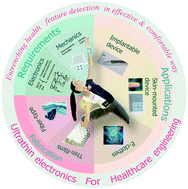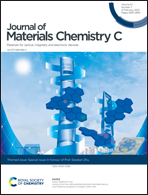Challenges and emerging opportunities in transistor-based ultrathin electronics: design and fabrication for healthcare applications
Abstract
Ultrathin healthcare electronics are gradually being employed for daily physiological monitoring and medical treatment tasks which have long been dominated by bulk and expensive devices. Recent advances in ultrathin devices have enabled more intimate interactions between humans and electronics in a highly accurate, comfortable, and even imperceptible manner. However, demands for new paradigms to establish long-term biosafe, robust, and anti-interference devices for healthcare management are still increasing, particularly amid the coronavirus pandemic. This review summarizes the recent progress in ultrathin transistor-based wearable devices ranging from implantable, skin-mounted devices to smart textiles. Emerging solutions and promising strategies for challenges encountered by high-performance systems have been summarized comprehensively from both mechanical (such as strain-insensitivity and permeability) and electronic (such as signal transduction ability and anti-interference) perspectives. In addition, the design and fabrication of ultrathin electronics with different topological categories have been discussed in detail. The prospective applications for ultrathin electronics to integrate with sensors, perception components, actuators, and drug delivery for clinical or healthcare management have been summarized.

- This article is part of the themed collection: Special issue in honour of Daoben Zhu


 Please wait while we load your content...
Please wait while we load your content...